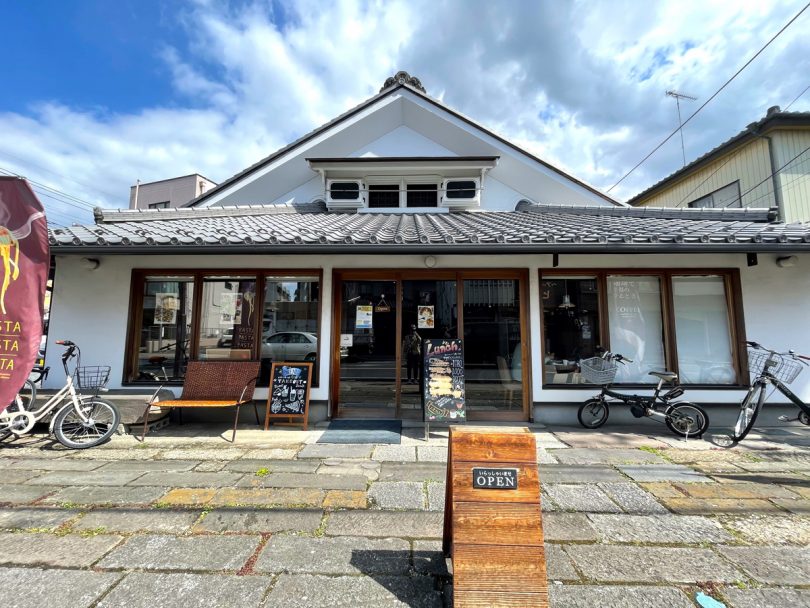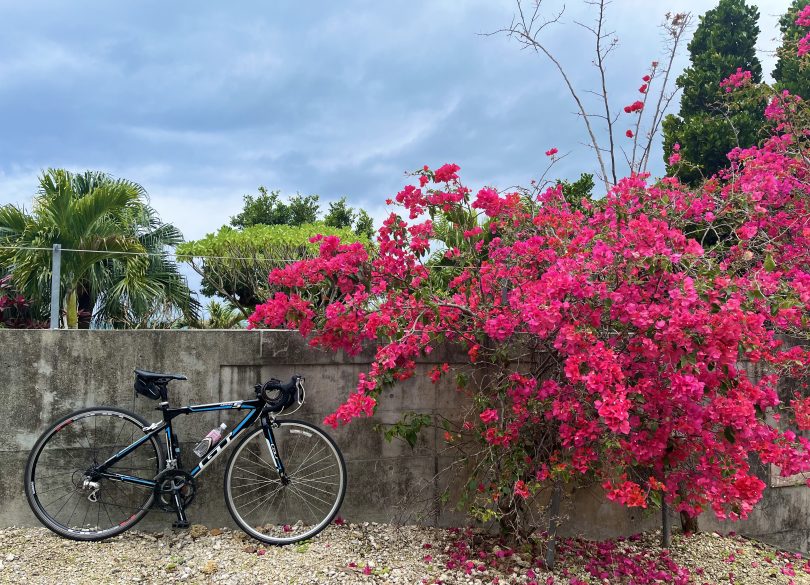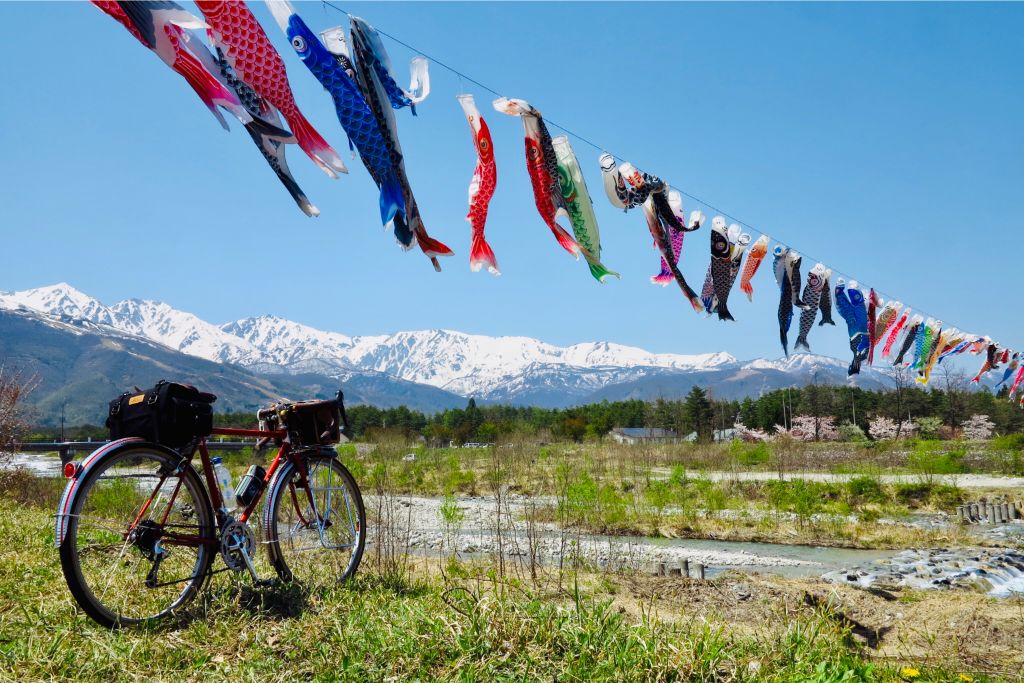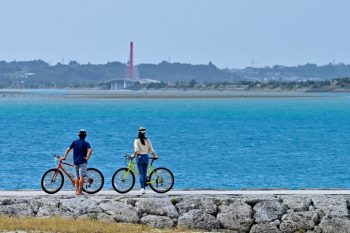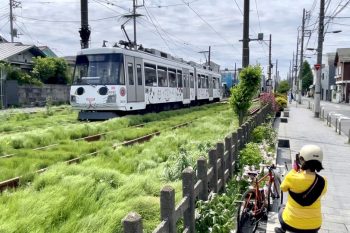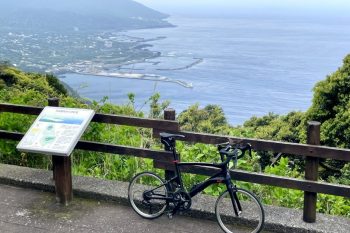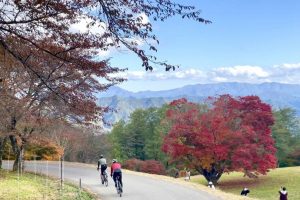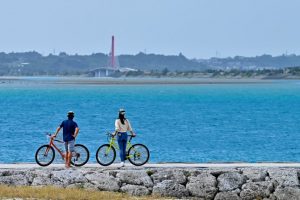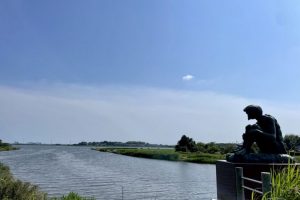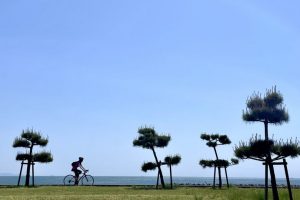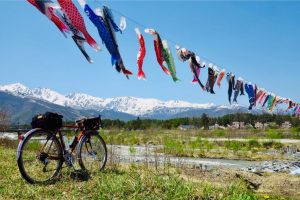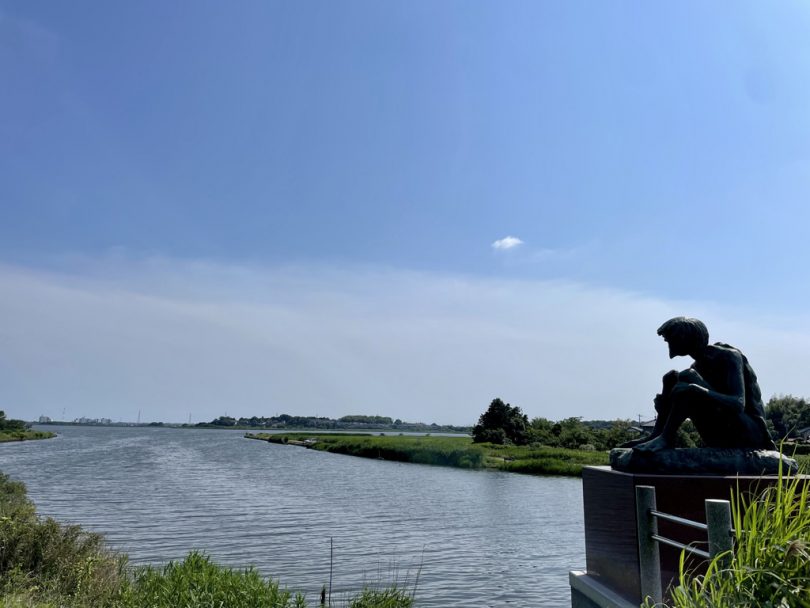
Ushiku City is famous for the 120-meter-high Ushiku Daibutsu Buddha that appears in Kanto Plain, but in fact, it is also the city of “Kappa”, a Japanese mythical water-dwelling creature.
I went on a 16-km cycling tour in search of kappa to learn about the city and history of Ushiku.
Contents
What is Ushiku City like?
Ushiku City is located in the southern part of Ibaraki Prefecture. It is located within a 50km radius of central Tokyo, and is served by the JR Joban Line and the Ken-O Expressway.
The city has a population of about 85,000. In the eastern part of the city, there is the nationally famous Ushiku Daibutsu, the world’s largest standing bronze statue of Buddha, which attracts many tourists. There are various theories as to the origin of the name “Ushiku,” but local legend has it that the name “Ushiku” came from “a swamp that eats cows. There is also a kappa legend about Ushiku Swamp in the city.
“Ushiku Kappa Festival” is held in July.
Ushiku Station,JR Joban Line
The starting point is the east exit of JR Ushiku Station. There were many people coming and going.
On the side of the roundabout, there was a handprint of the 72nd yokozuna Kisenosato ( Araiso-Oyakata).
Ushiku City is one of the places associated with him.
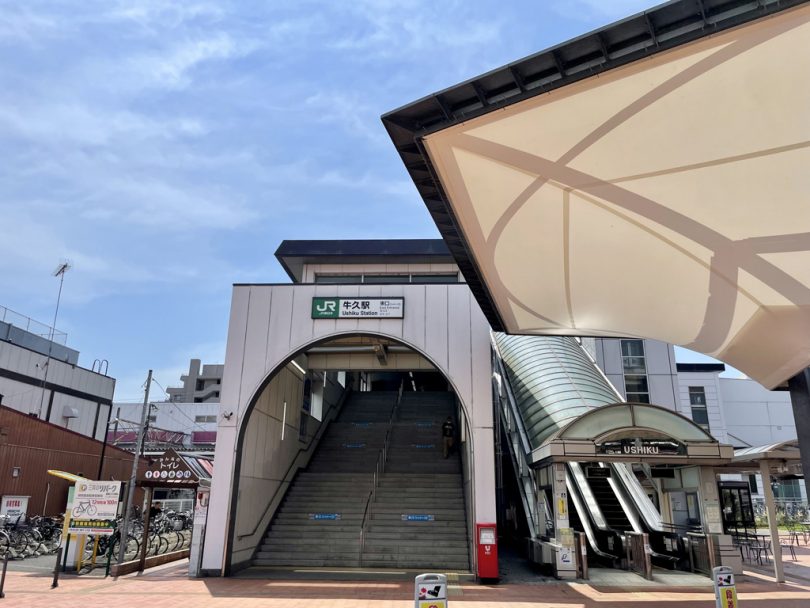

When he was promoted to yokozuna, a victory parade was held at the east exit.
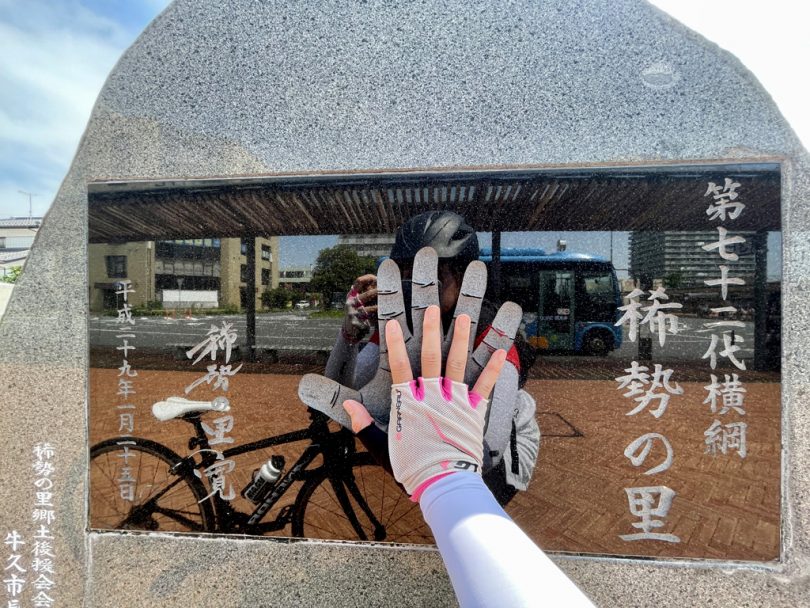
When you put your hands together, you can see how big it is. After taking pictures, I set out to look for kappa.
First, I decided to visit Ogawa Usen Memorial Museum, where he is said to have left many pictures of kappa to gather information.
I went southwest from the station through the town to a residential area.
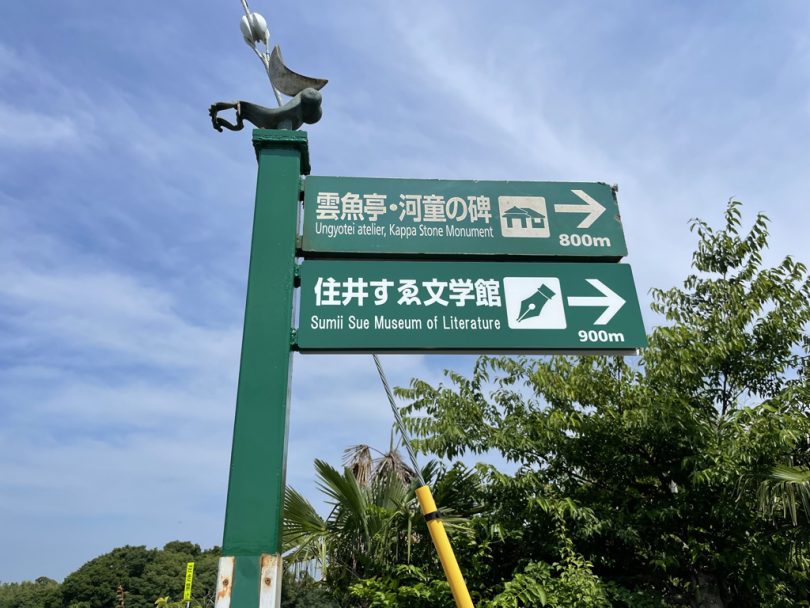
There was an information board.
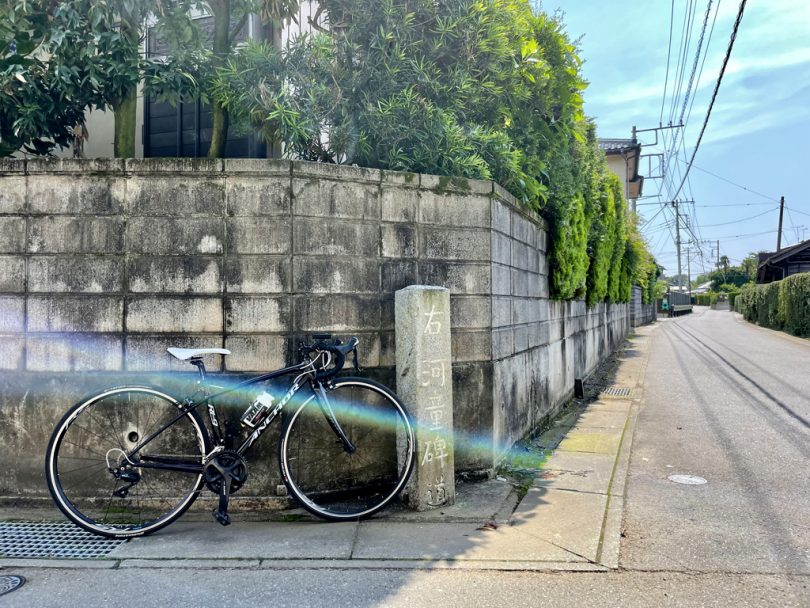
There was also a stone signpost with “Kappa Monument” carved on it. Following the sign, I proceeded through the quiet residential area.
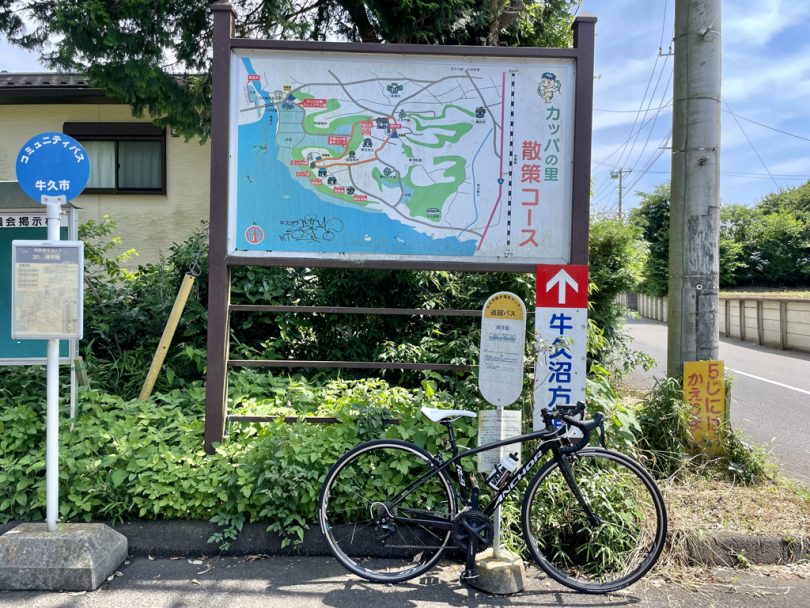
On the way, I found a big signboard that said “Kappa no Sato Walking Course.” The memorial hall seems to be located by Marsh Ushiku.
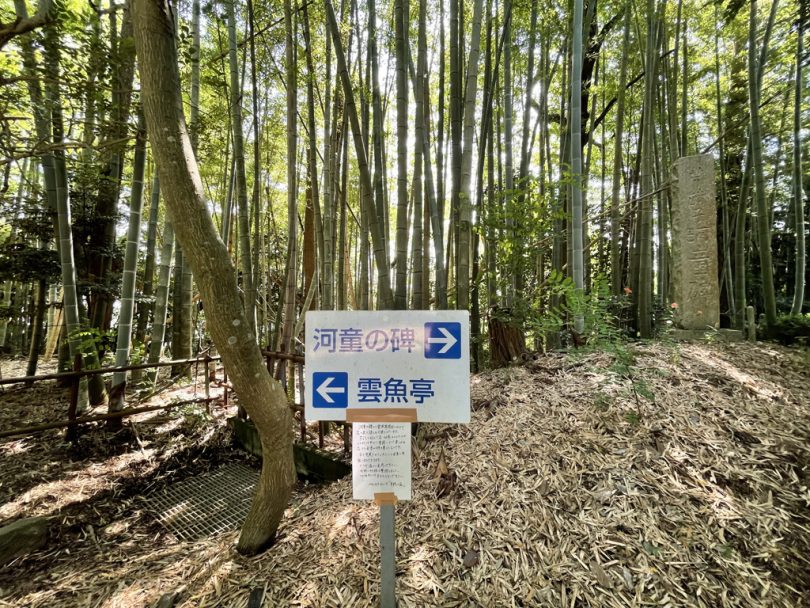
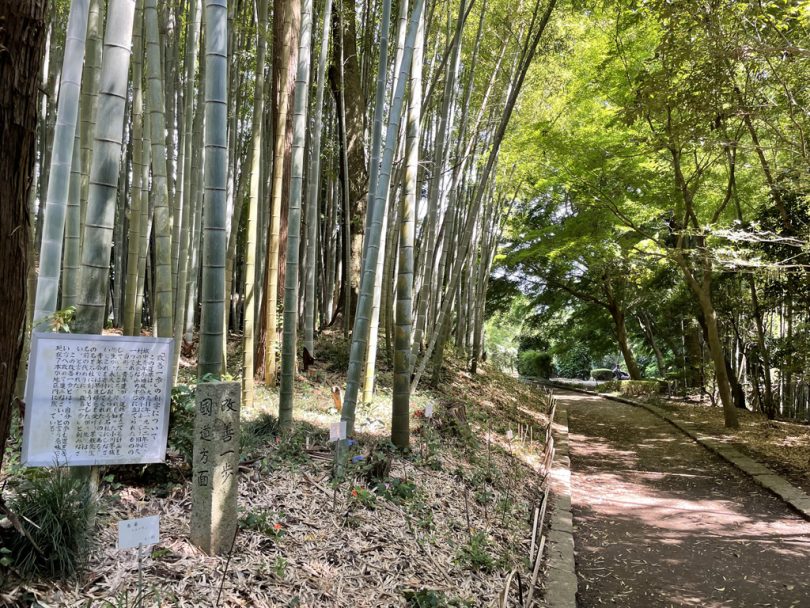
The memorial hall seems to be located at the end of a bamboo grove. The shade of the trees was cool and there were local people on the benches in the site.
Ungyo-tei, Ogawa Usen Memorial Hall
Ung-tei was built as a residence and studio where Usen Ogawa spent the last years of his life. Usen was a Japanese-style painter active from the Meiji period to the early Showa period.
The memorial hall was built in the early Showa period (early 20th century) and is designated as a city-designated cultural property because it retains much of its original appearance. Admission is free. On weekends and holidays, the interior is open to the public.

Visitors can enter through the entrance and walk through the corridor with glass doors to see reproductions of Usen’s works and art materials.
Visitors can also freely browse through works such as “One Hundred Drawings of Kappa” by Usen.
I was able to talk with the caretaker, who told me that when Usen lived here, the view of Marsh Ushiku could be seen from Ungyo-tei, and that the view of Marsh Ushiku in the old days was wonderful.
So the legend of kappa was born in a land rich in nature.
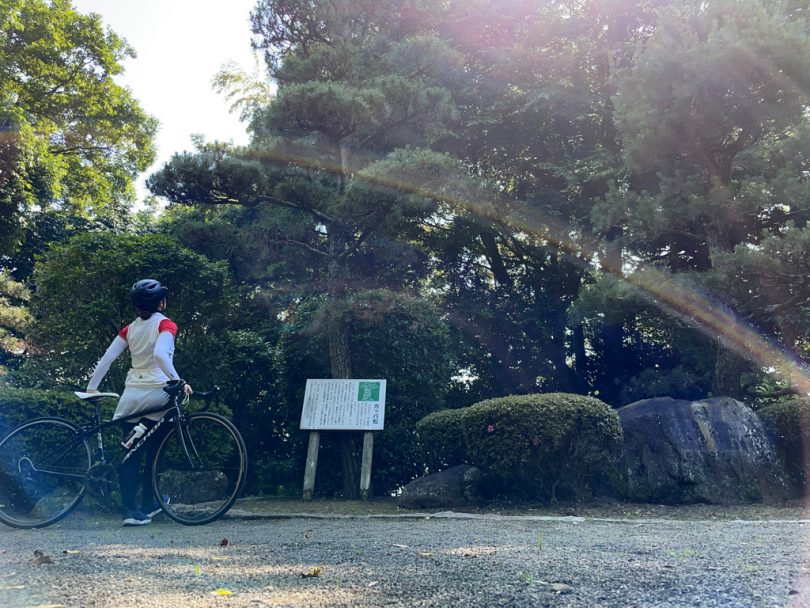
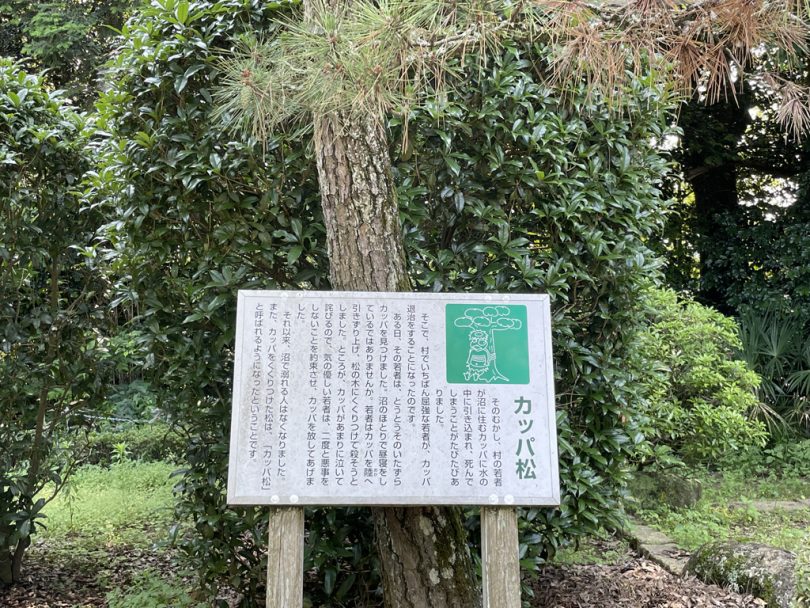
And there was ”Kappamatsu (kappa pine tree)” near the memorial hall. One of the legends of kappa in Ushiku was written on it.
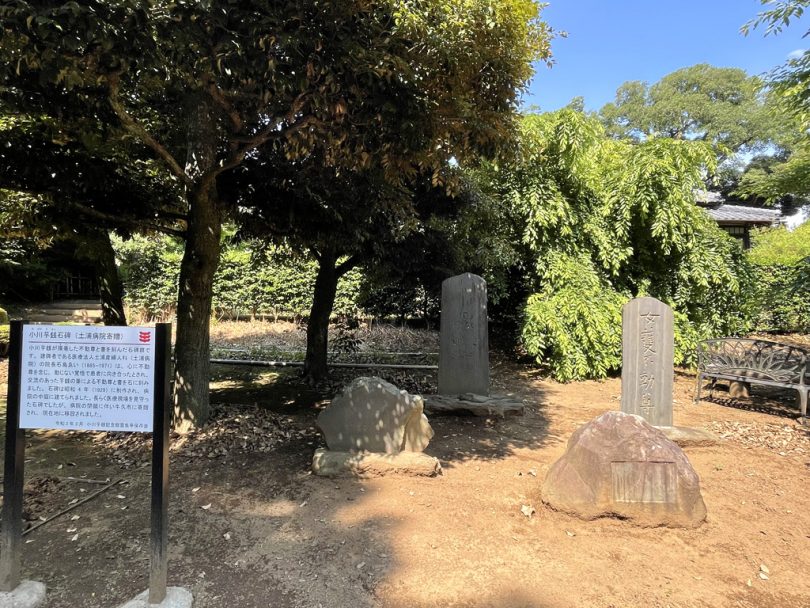
There was also a stone monument of Usen.
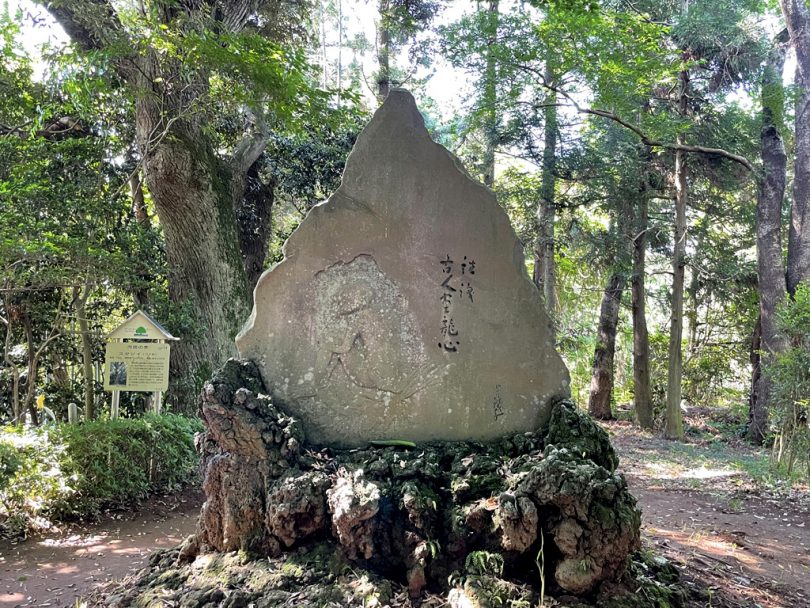
And there is “Kappa Monument” not far from here. I headed for Ushiku swamp, which is mentioned in the legend of kappa, to look for kappa.
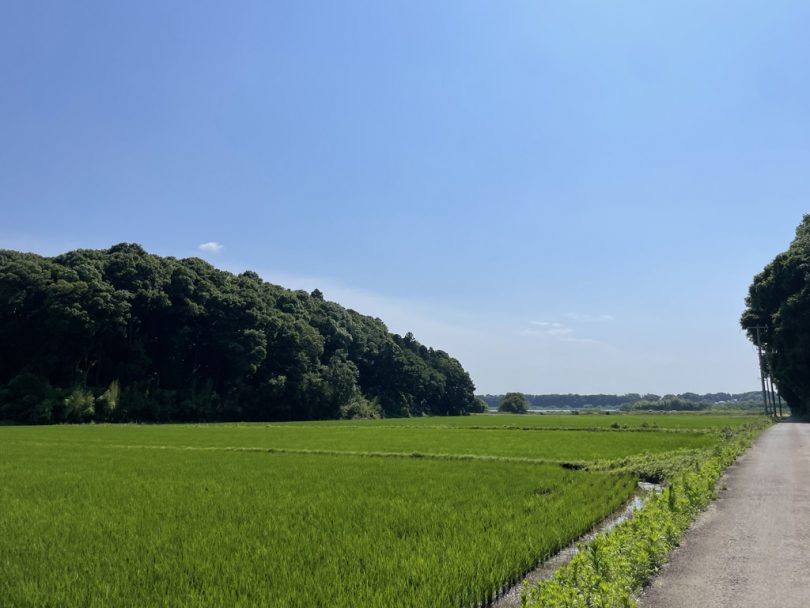
It was nice to ride a bicycle while looking at the country view on the way.
Marsh Ushiku
Marsh Ushiku is connected to Kogai River and has a circumference of about 25km, bordering Ushiku City, Ryugasaki City, Toride City, and Tsukuba City.
It is said that Mt.Tsukuba and Mt.Fuji can be seen from here. The legend of the kappa has been passed down through the generations in this scenic area.
In the “Story of the Little Boy Who Became a Cow,” it is said that the name “Ushiku-numa” (Marsh Ushiku) came from the swamp where the lazy boy became a cow. There are other legends as well, so please check them out.

I found a kappa on Mikazuki (crescent moon) bridge where Inari River flows. It looks as if it is looking depressed and lonely.
Ushiku City Tourist Iris Garden
Ushiku City Iris Garden can be seen from Mikazuki bridge, and many people visit during the month of June when it is at its best.
The building with restrooms next to the parking lot was also used as a gazebo.

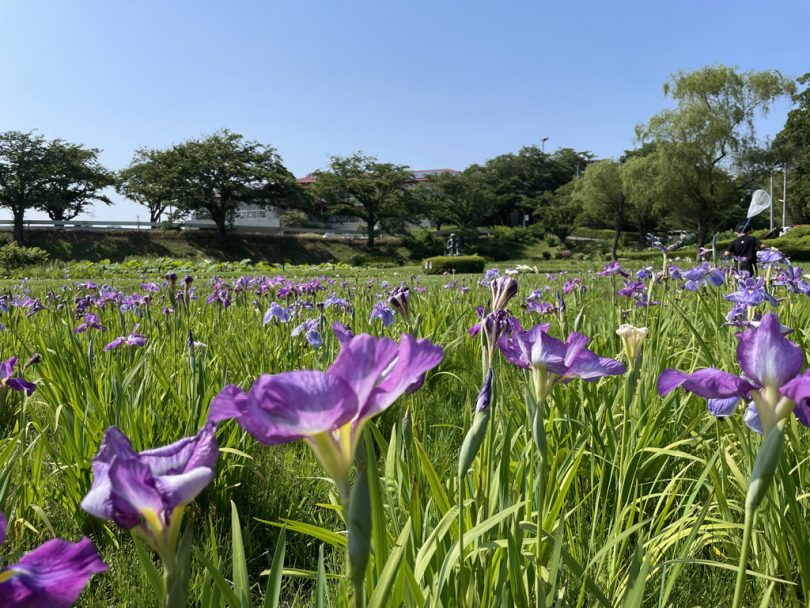
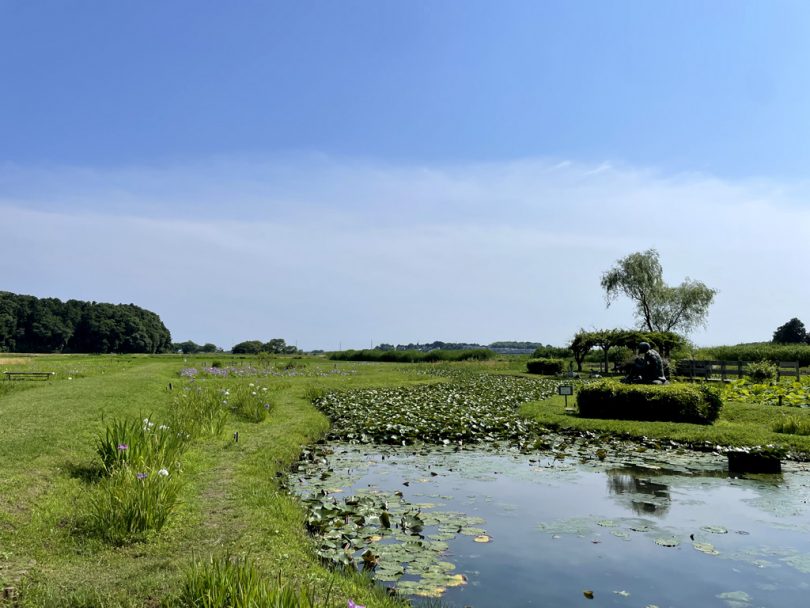
In the total area of 8,000㎡, irises and Japanese irises bloom. In addition, the rows of cherry trees along the Inari side of the park can be seen in spring.
Walking around the park, I saw the backs of kappas.
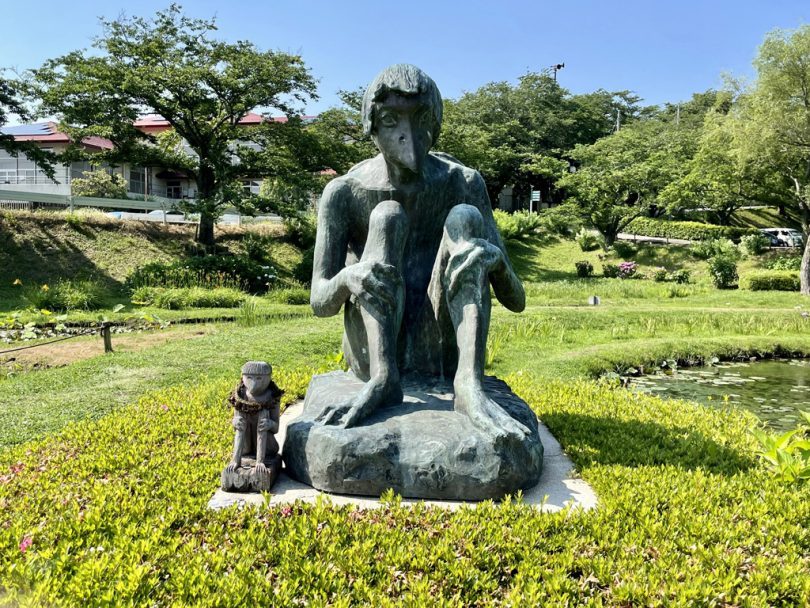
Large and small kappas were sitting side by side. They seemed to be quietly watching the irises.

In another place, a small kappa was playing with a dog. It looked as if it was talking to the dog.
Next, I headed to the town to look for the kappa.
Handmade Kappa Honpo
Passing through a residential area, “Handmade Kappa Honpo” can be seen along National Route 6. It is named after the legend of kappa.
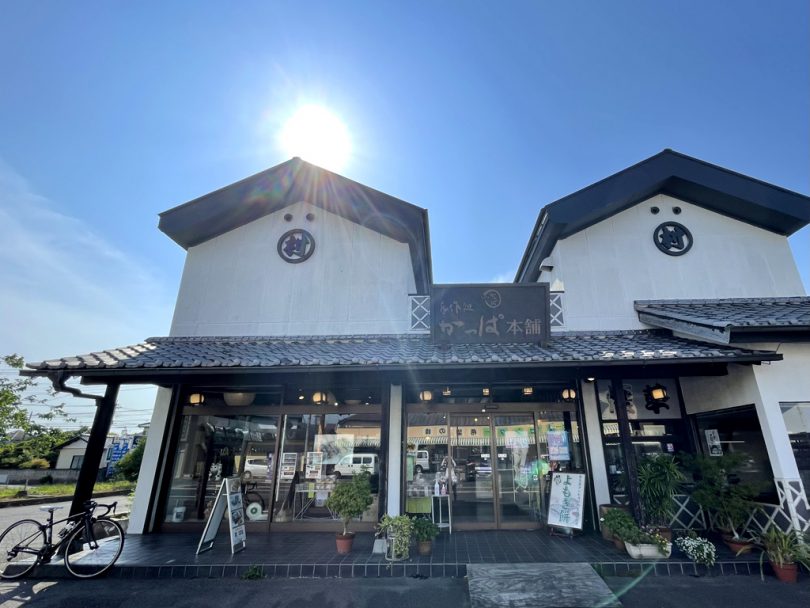
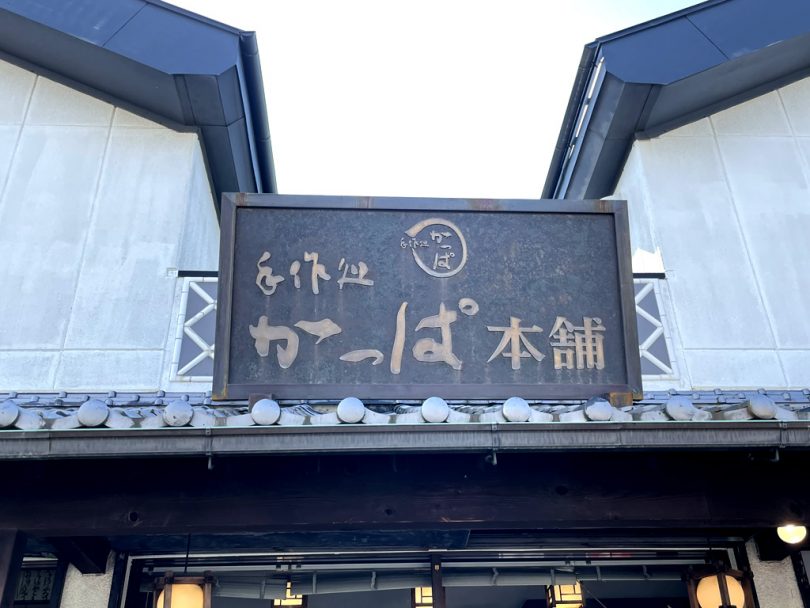
Inside the spacious store, which sells rice crackers and peanuts, there are tables and chairs so that customers can eat in the store.
While chatting with the owner, I enjoyed “Ibaraki melon ice,” “peanut dango,” and “Kyu-chan rice crackers” with Kyu-chan, the mascot character of the Ushiku City Tourism Association, drawn on them.
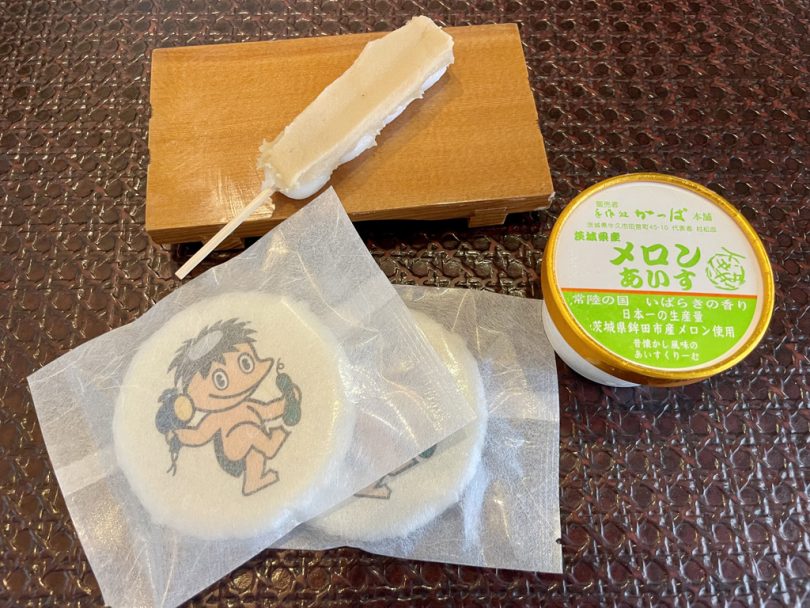
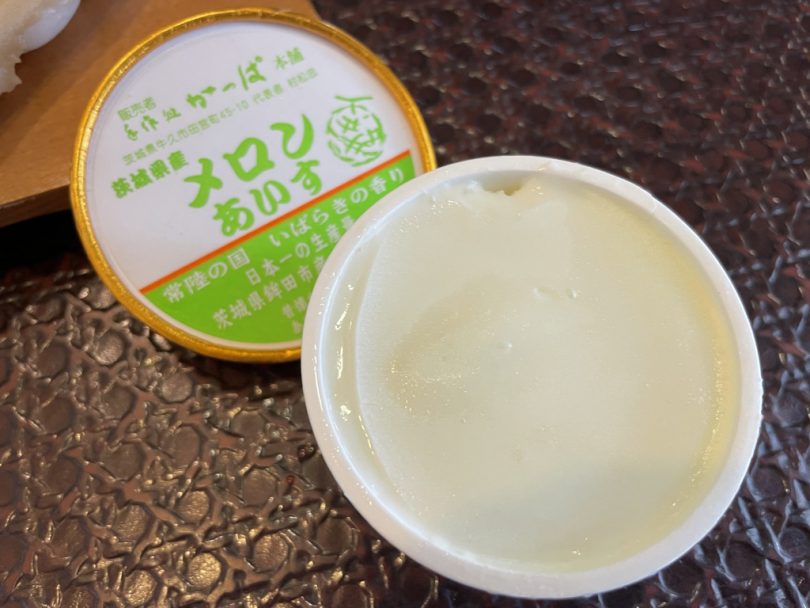
The refreshing taste of melon refreshed my feeling.

The peanut bean paste was delicious and not too sweet. Above all, dango (mochi) was soft and sticky.
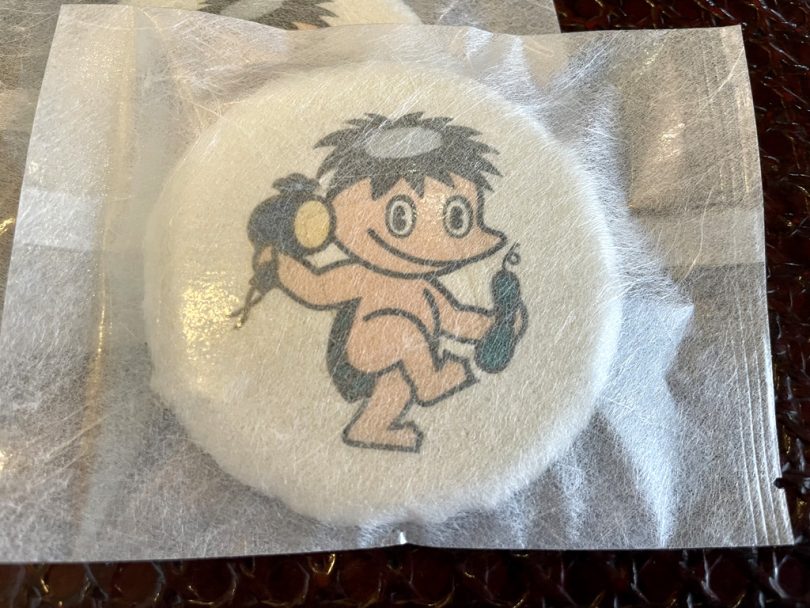
These rice crackers are a perfect souvenir of Ushiku.
When I told the owner that I was looking for a kappa, he told me that kappas were drawn on the shutter art on the street behind the store and that there were kappas on the pedestrian bridge near the station.
After a lively discussion about Ushiku, I resumed my search for kappas. I went out of the store and looked around the back and found the shutter art.
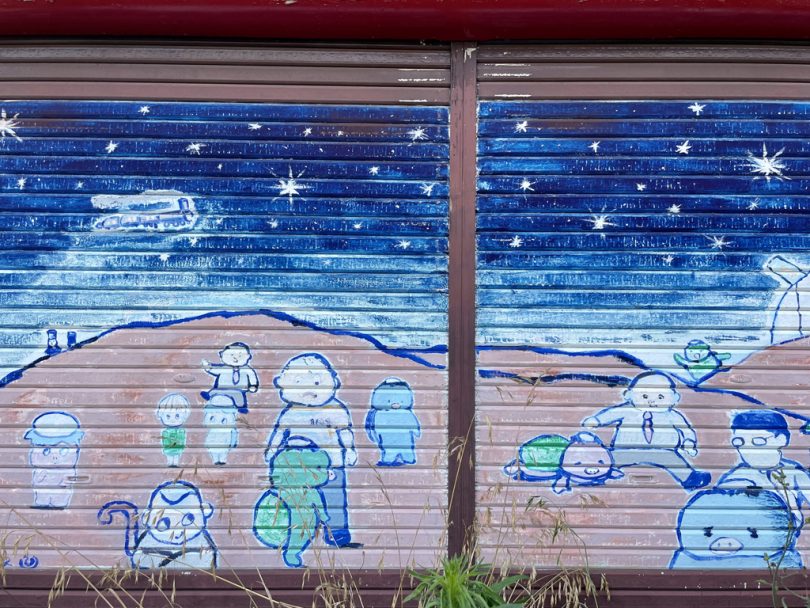
It depicted cute kappas playing with people. I then headed toward the station.
Sundial
There is a pedestrian bridge near Ushiku Station East Exit intersection. Pushing my bicycle up the bridge, I found a large sundial.
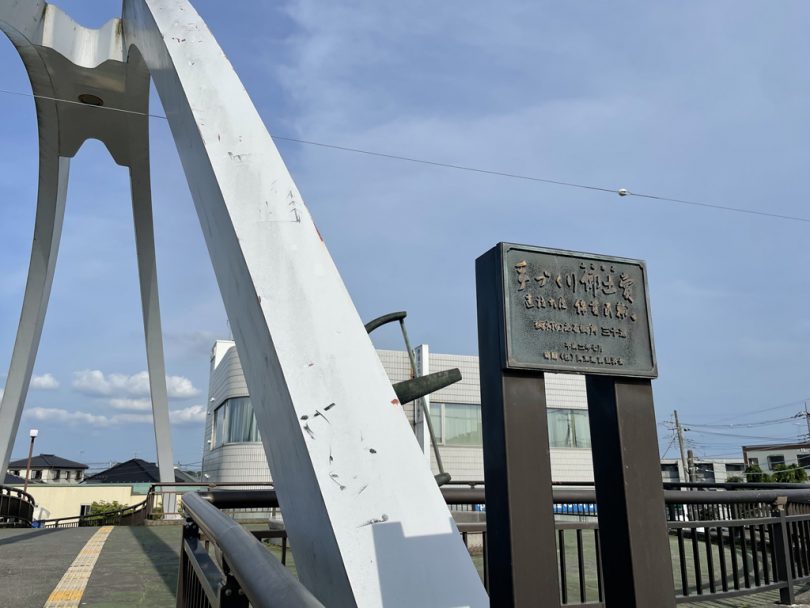
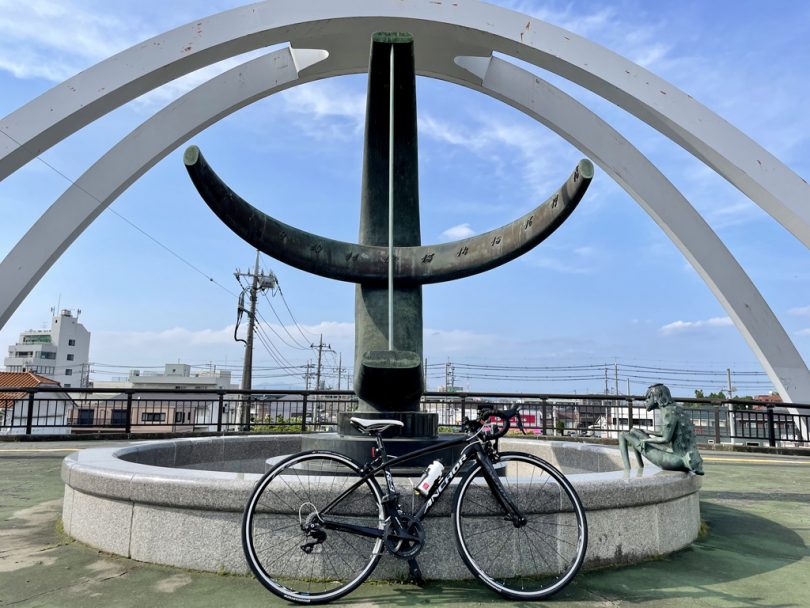
There was a kappa sitting alone at the foot of the sundial.
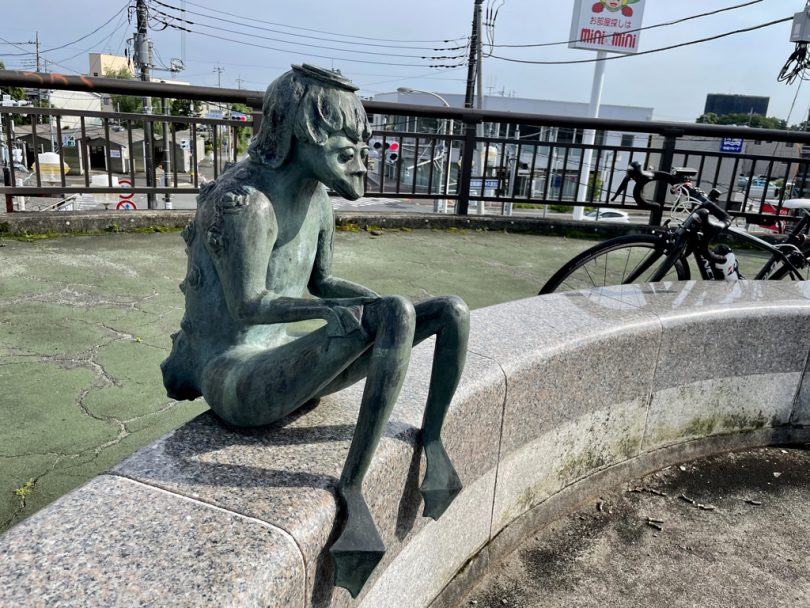
It looked like it was taking a rest.
Saito Coffee
About 300m from the sundial is Saito Coffee.
There was a bike rack in front of the modern building. Inside, there was a counter and tables, and regular customers were visiting.
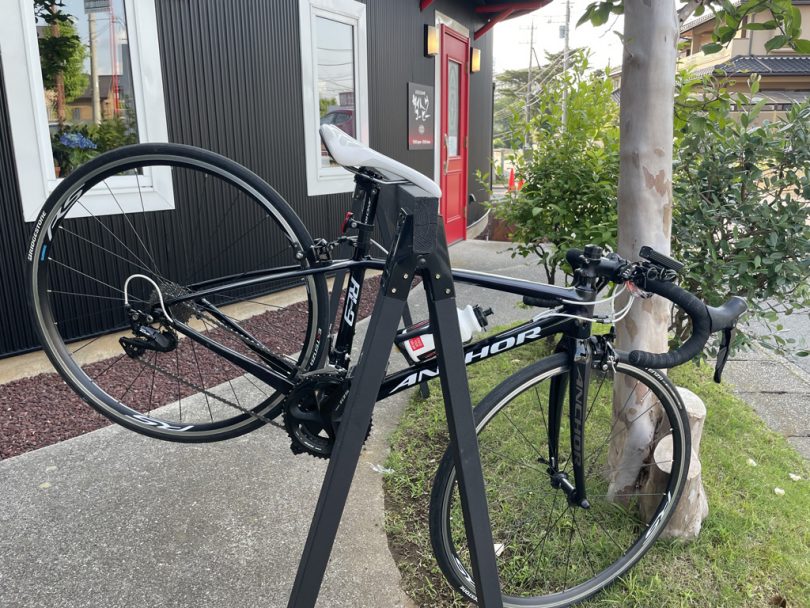
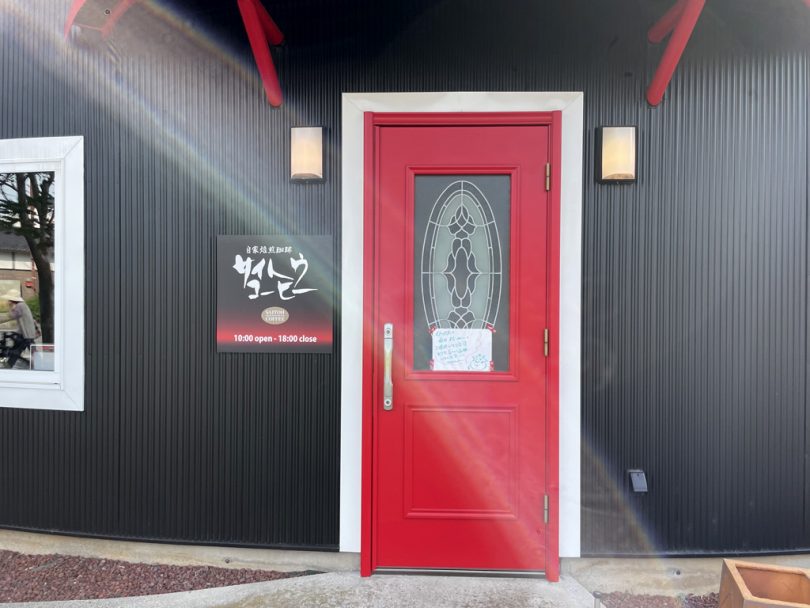
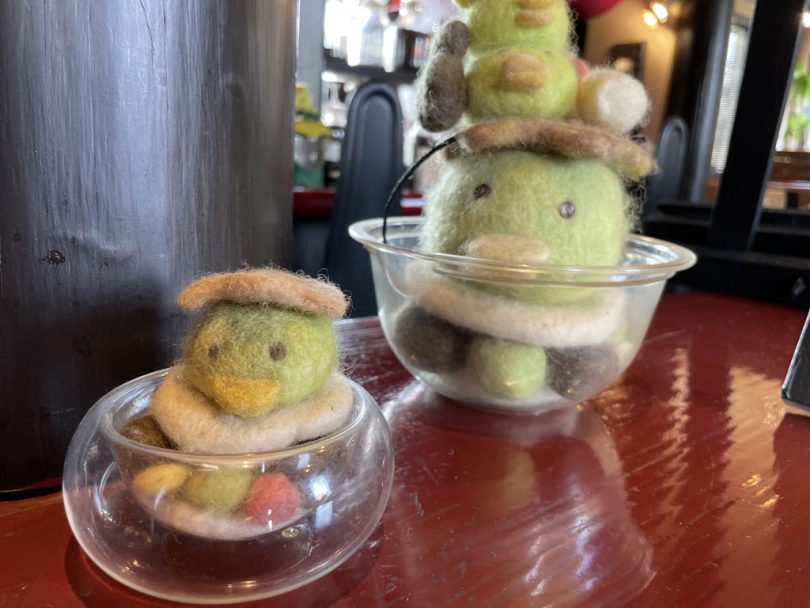
There was also a kappa at the table. First, I decided to have a cup of their specialty coffee.
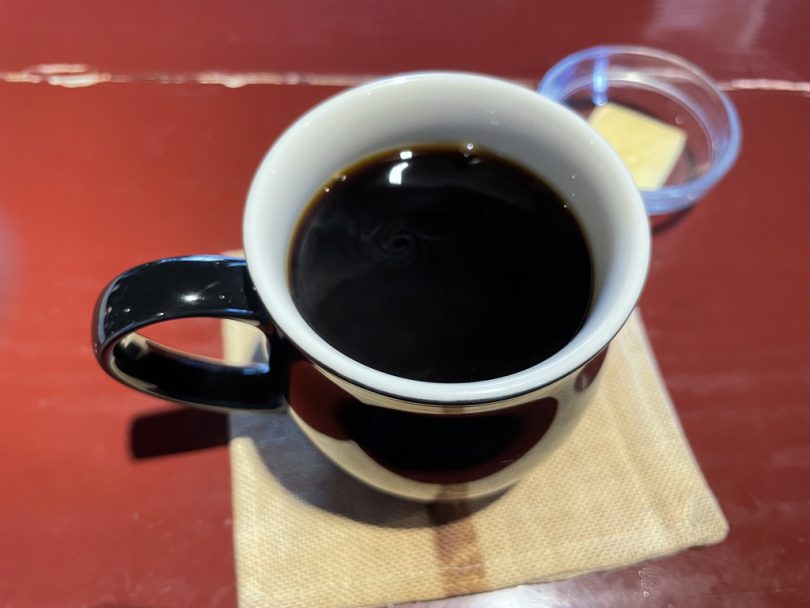
Attracted by the name, I ordered “Yokozuna Blend.” It was a rich and slightly sweet coffee.
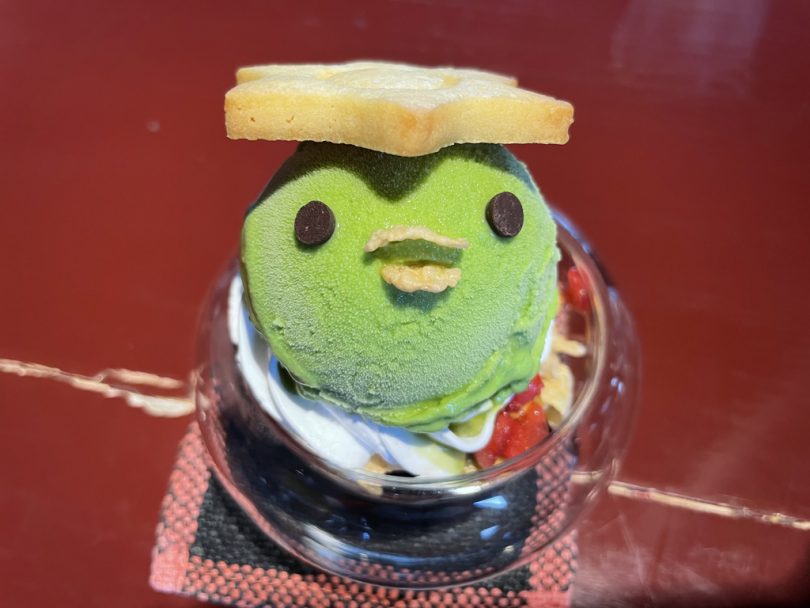
My favorite was “Kapparfait,” (kappa parfait) , which is served from 3:00 p.m. to 6:00 p.m.
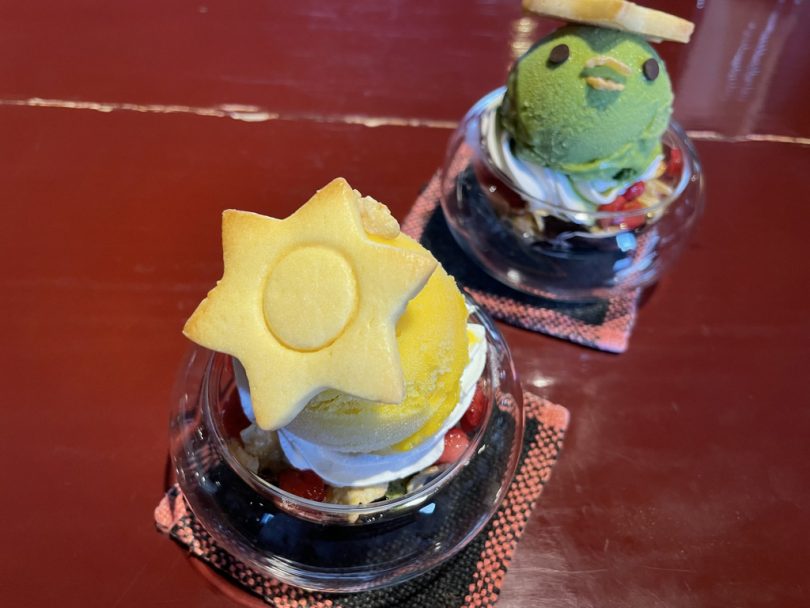
It is made of green tea ice cream and cookies to represent a plate of Kappa’s head.
There was also cereal and coffee jelly under the ice cream, so it was very satisfying.
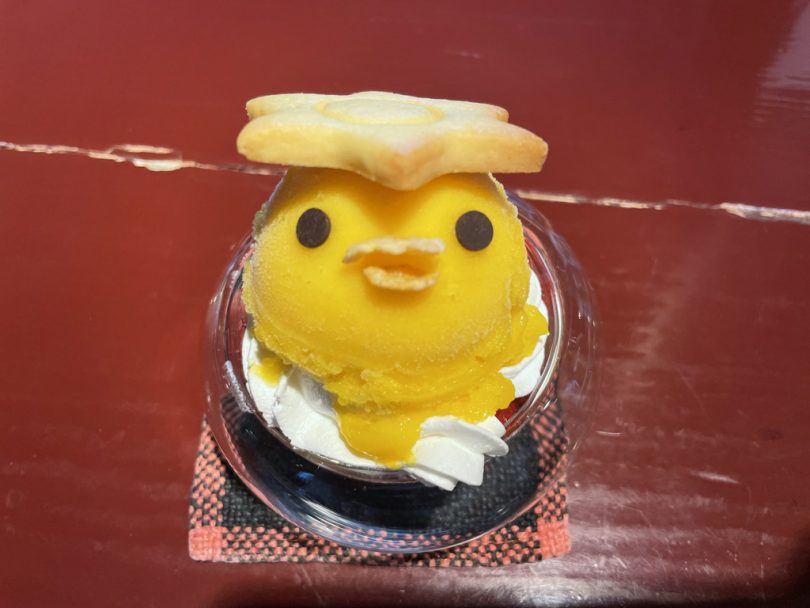
And every even-numbered month, they serve a limited-flavor kappa parfait.
June is mango sorbet. Both are so pretty that I hesitate to eat them.
I would like to visit again in even-numbered months to try the limited flavor.
After that, I went to Ushiku Chateau to look for Kappa manholes.
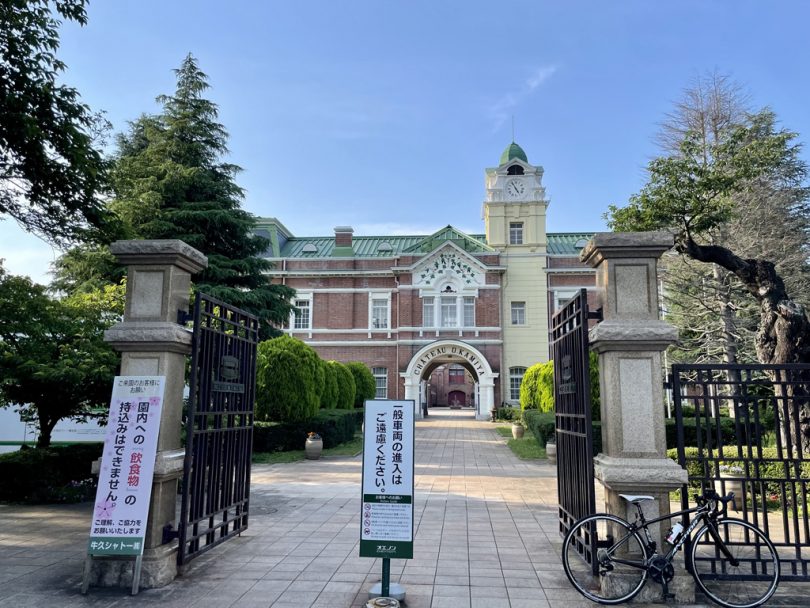
Ushiku Chateau was built in 1903 as Japan’s first full-scale wine brewery.
The red brick structure is a Western-style building from the Meiji era and shows its elegance. There are restaurants, stores, and a museum.

On the street in front of Ushiku Chateau, I found a manhole of Kappa Kyu-chan.
I returned to the station and finished the Kappa-seeking cycling tour.
Course Introduction
Summary
This was a 16-km cycling tour that allowed us to get to know the city of Ushiku.
It was also good to have a chance to talk with local people and hear their thoughts on the city. Cycling while looking for things to see in each town was an eventful experience that even people who are not used to riding bicycles could enjoy.
Knowing the local area makes cycling a memorable experience.




